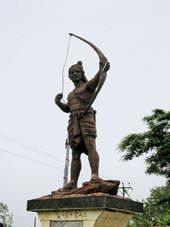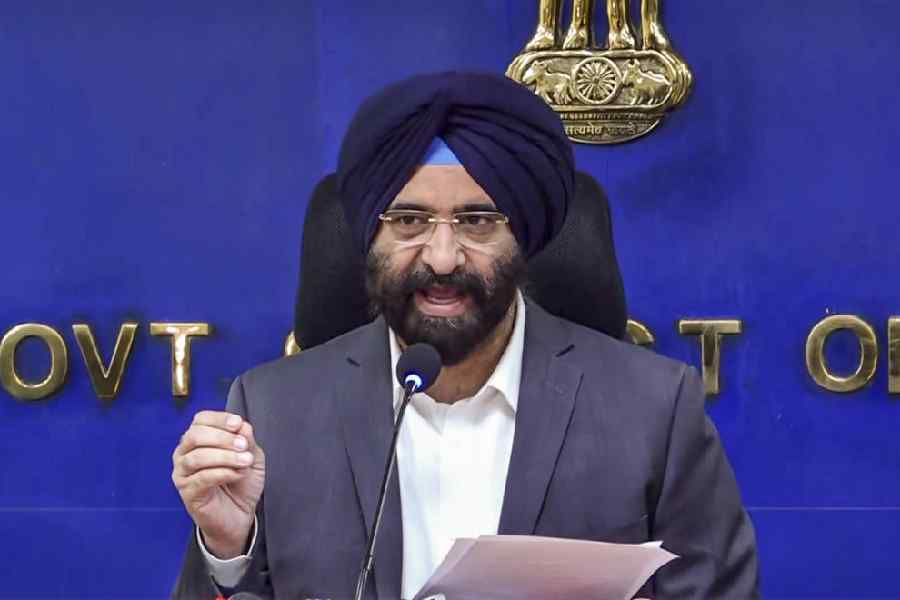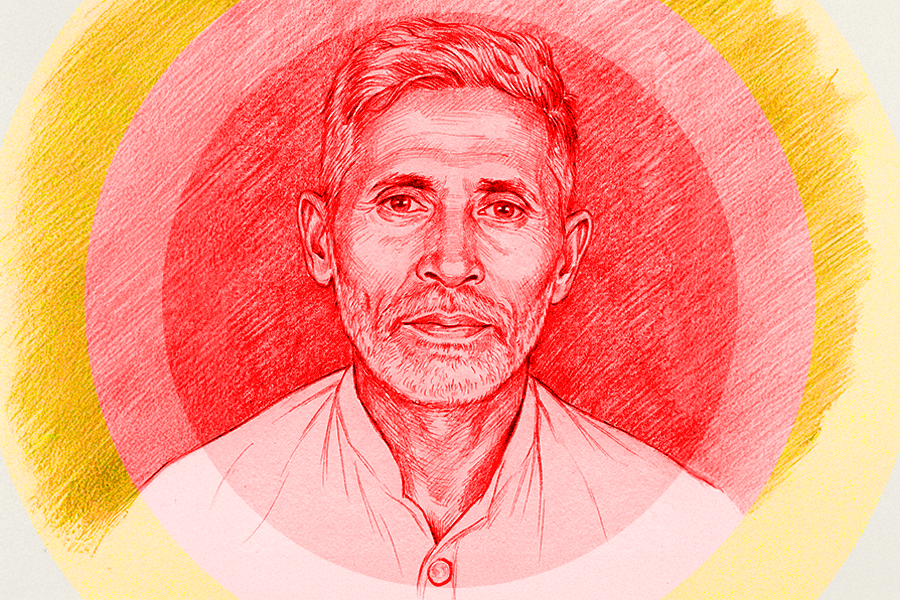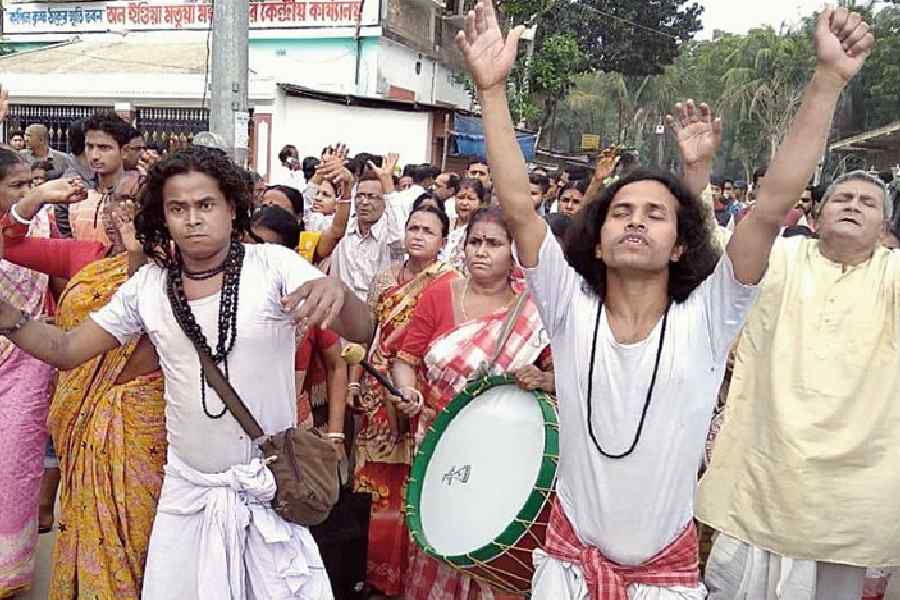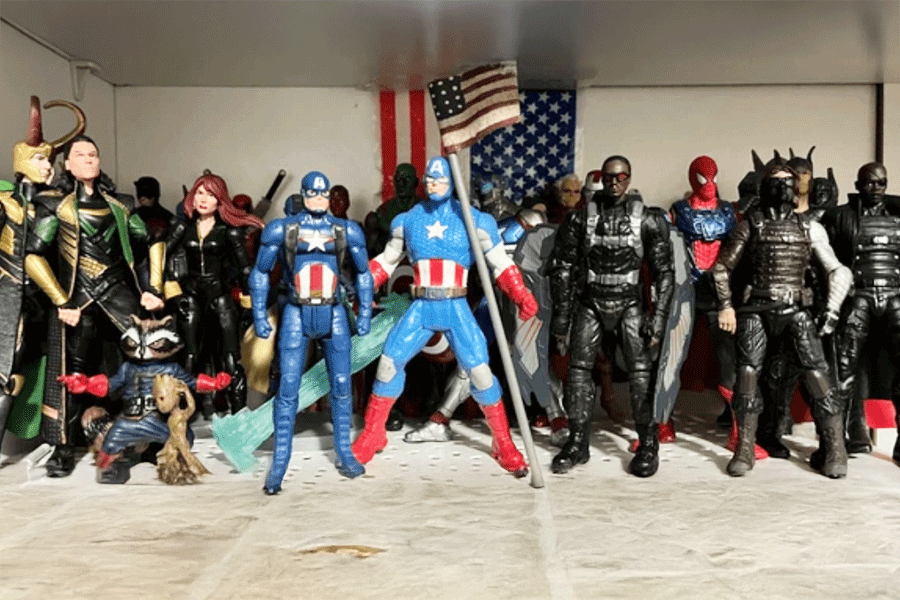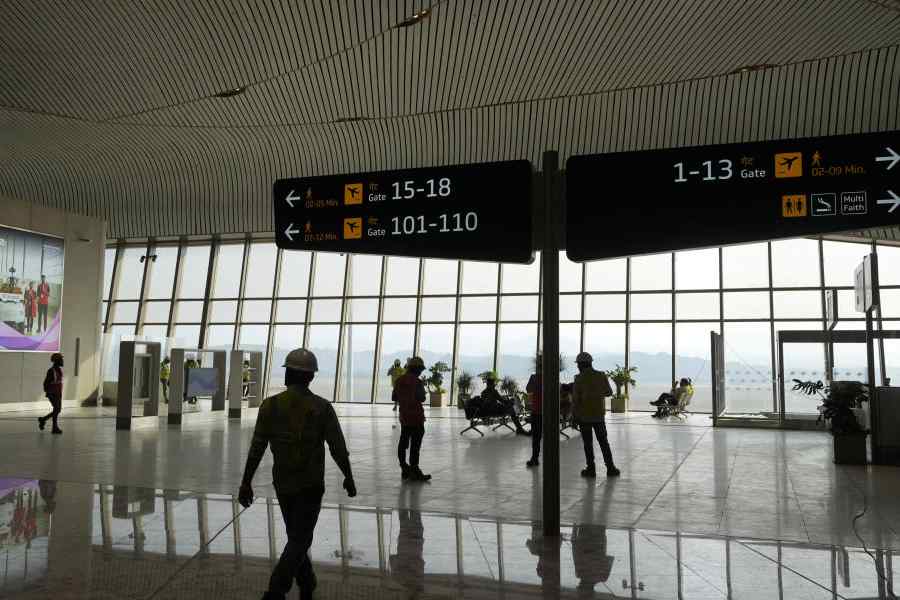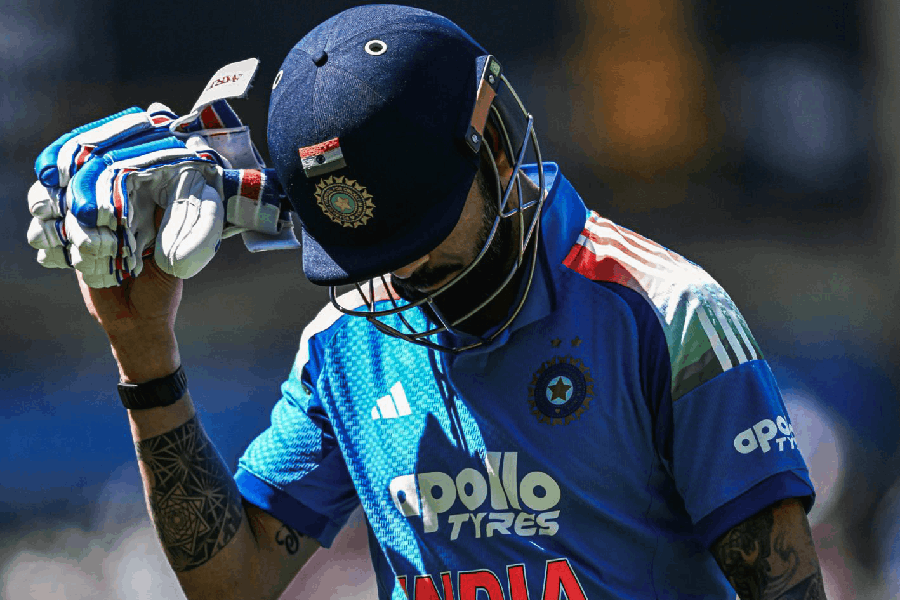 |
 |
| STANDING TALL: The statue of Jaora Paharia in Dumka. (below) The copper coin issued by the East India Company to commemorate Paharia. Pictures by Mani Keshri |
It is not clear how many people will remember Jaora Paharia on the Independence Day. The name is not very familiar to the people although historians are getting increasingly intrigued by his shadowy figure. What is undisputed at the moment though is the empathy that Paharias feel today for the late hero, who, they claim, was none else but Tilka Manjhi, deified as a martyr and freedom fighter in history.
What is also not disputed is that the British rulers brought out a copper coin on Jaora Paharia around 1894, almost a hundred years after his death. Curiously, British records describe him as a rebel and a “dreaded bandit” ruling over Rajmahal Hills. Why would they issue the coin to commemorate a rebel? The question has foxed historians and there is no consensus yet among them.
But Paharias feel wronged by the continued neglect of their hero. And attempts are being made to correct the historical distortion. In June this year, former chief minister Arjun Munda walked several kilometres to unveil a statue of Jaora Paharia to mark the 152nd anniversary of the Santhal Hul (insurgency). The very next month, Dumka-based social worker Anup Kumar Bajpayee published a calendar on the Paharia hero and the coin issued on him by the East India Company.
Historical evidence strangely claims that Jaora was actually made the commander-in-chief of the 1,300-strong Hill Archers’ Core (HAC) comprising local men armed with bows and arrows. The band was meant to subjugate the Rajmahal hills. For reasons not yet clear, Jaora Paharia fell from grace and was denounced as a rebel and a bandit.
Some historians have sought to explain that the Company was forced to issue the coin in a bid to win over the Paharias. After having failed to control them, the Company tried everything to appease the tribals. Augustus Cleveland recommended to Warren Hastings that the tribals be allowed to promote their traditional customs and social systems. He also wanted Hastings to provide financial assistance to the Paharias. It was the same design that prompted Eyne Cool to constitute the Hill Archers’ Core. And the issue of the copper coin, too, appeared part of a desperate appeasement policy, writes Rajendra Singh in his book on Tilka Manjhi.
Singh also advances the theory that the Company and later the British rulers tried to divide the Paharias and the Santhals. In his District Gazeteer of Santhal Parganas, P.C. Roy Choudhury endorses such attempts and records how the village heads were offered allowances to the Paharias. “The chiefs of northern hills gladly accepted the allowances but they were turned down by the chiefs in hills to the south,” mentions the Gazeteer ( page 66).
While the mystery of the coin on Jaora is yet to be resolved to the satisfaction of everyone, yet another complexity relates to the claim that Jaora and Tilka Manjhi were one and the same person. Tilka Manjhi is acknowledged by historians to be a Robinhood-like figure who robbed the Company’s treasury to share the spoils with the poor. He is said to have sustained a guerrilla warfare, attacked Bhagalpur in 1784 and killed the young collector, Cleveland, with a poisoned arrow. At least that is what Dr Kumar Suresh Singh has written in his book Tribal Society of India.
Historians agree that Tilka Manjhi was apprehended in 1785, flogged, tied to a horse and dragged through Bhagalpur before being hanged from a banyan tree. The site is known as Tilka Manjhi Chowk, the area is known after him and the Bhagalpur University is also named after this heroic figure.
But Paharias have been claiming that Tilka Manjhi was none else than Jaora Paharia. “Tilka denotes blood-shot eyes in Paharia,” points out Shailendra Sinha, a social worker based at Dumka. Raman Kumar Sinha, a reader in the department of history at Tilka Manjhi Bhagalpur University, claims that Jaora Paharia took on the name of Tilka Manjhi after he turned against the Company.
If all these complications were not enough, there is controversy over the manner in which Augustus Cleveland died. British chroniclers claim he died of natural causes and that he had attended office till November, 1783. Since the collector was also barely 29-year-old, historians wonder how he could have taken ill so suddenly to die within a month. The plaque below the statue of Tilka Manjhi, however, is categorical in stating that he killed the “arrogant” collector with his poisonous arrow.
Paharia Adim Jaati Seva Samiti organised a demonstration in January, demanding that Tilka Manjhi be recognised as a Paharia and the word “Santhal” be removed from official records and plaques. A harried administration has now referred the matter to the Tribal Welfare Research Institute, Ranchi, for arbitration.

